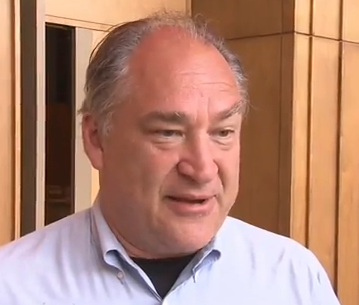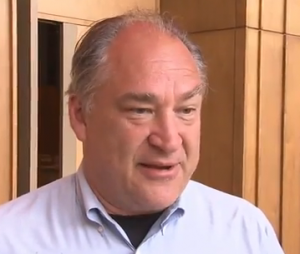
Marc Elrich Statement on Transit Corridors Plan
 Montgomery County Councilmember Marc Elrich, who seven years ago introduced the concept of creating a Bus Rapid Transit (BRT) system in the County, made the following statement on Nov. 26 after the Council approved the Countywide Transit Corridors Functional Master Plan.
Montgomery County Councilmember Marc Elrich, who seven years ago introduced the concept of creating a Bus Rapid Transit (BRT) system in the County, made the following statement on Nov. 26 after the Council approved the Countywide Transit Corridors Functional Master Plan.
The master plan includes a guideline for establishing a BRT system that would have approximately 82 miles of mostly dedicated lanes for the network of specially designed buses (in addition to routes that would be part of the Corridor Cities Transitway).
The complete statement of Councilmember Elrich:
I’m happy we are at this point today of adding Bus Rapid Transit (BRT) routes to the master plan and acknowledging the importance of transit in our County. Seven years ago I asked my staff to find some roads where we could put transit that connected people from where they live to where they work. I knew that with all the existing congestion and all the planned and already approved development, we needed more and better transit to deal with traffic congestion and reduce carbon emissions.
I wanted to use to the maximum extent possible the median strips so that we would not have to acquire rights-of-way and instead work within the existing built conditions. As we looked at the County’s traffic patterns (north to south, east to west in the morning and the reverse in the evening), we found many places where a single, reversible lane would be sufficient and save capital costs.
There are benefits to such a design that acknowledges the physical limitations of space and the fiscal limits on funds.
We are adopting potential routes, which need further study, but at the end of the day, we have to do something. Many places in this County envision developing and producing major revenues that will not open up but for the addition of transit. It will be difficult to bring employment to the east side of the County without transit. It will be impossible to realize the potential of Shady Grove Life Sciences without transit and it will be impossible to connect Clarksburg, which was predicated on a transit corridor going all the way to Clarksburg and beyond. And, we will not realize potential on Maryland Route 355 in the White Flint Corridor unless there is additional transit.
It may take a long time. However, I am optimistic that if we are creative, work with partners and focus on achieving what we need to achieve–and don’t gold plate what doesn’t need to be gold plated–we will be able to design something that can be put into service sooner rather than later. And we can design something that helps and does not harm our existing communities. We can achieve the goals of moving people in peak direction, which frankly is our headache. At the same time, we will create a transit system that gives people a viable choice to sitting in their cars in gridlock.
I am really grateful for all the work that everyone has done on this – the committees that went before the Planning Board deliberations, the Planning Board, the County Executive and his staff, and the Council’s Transportation, Infrastructure, Energy and Environment Committee with Chairman Berliner’s excellent leadership. This work is a real service to the County and when things start happening on the ground, people will realize what the real benefits of this system are and the opportunities it opens for everybody.

Engage us on Facebook
Follow us on Twitter
Tweets by @mymcmedia